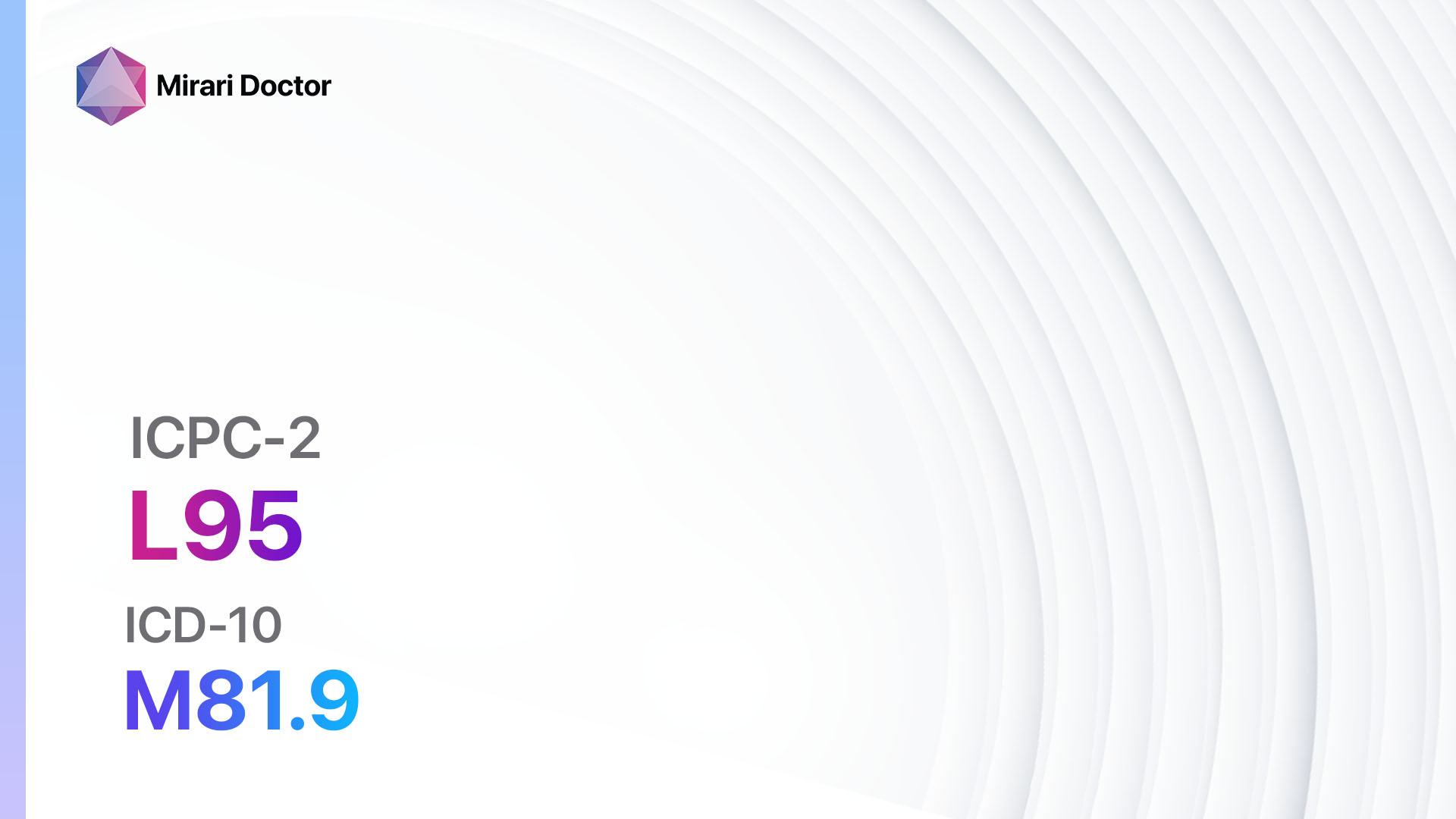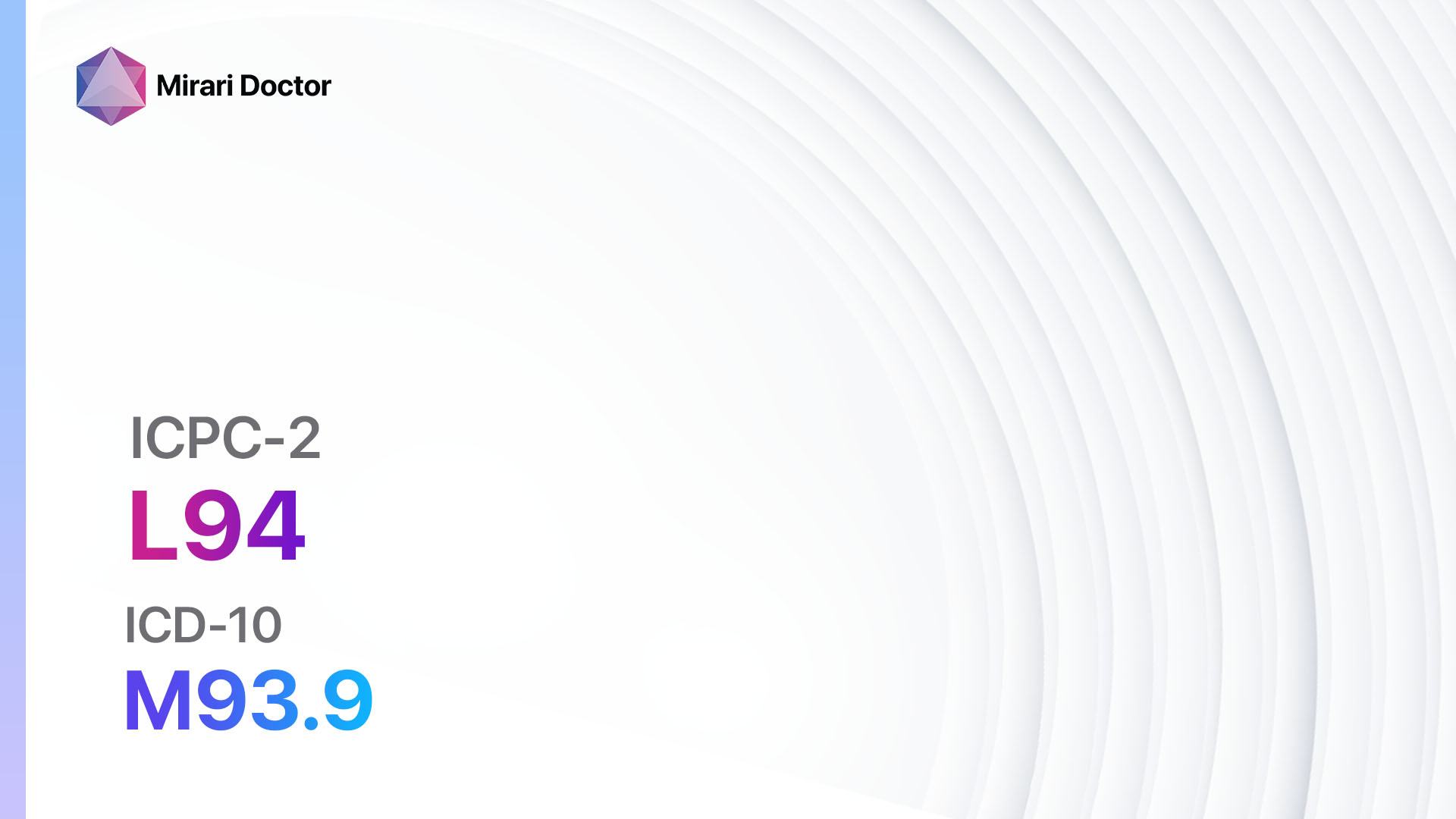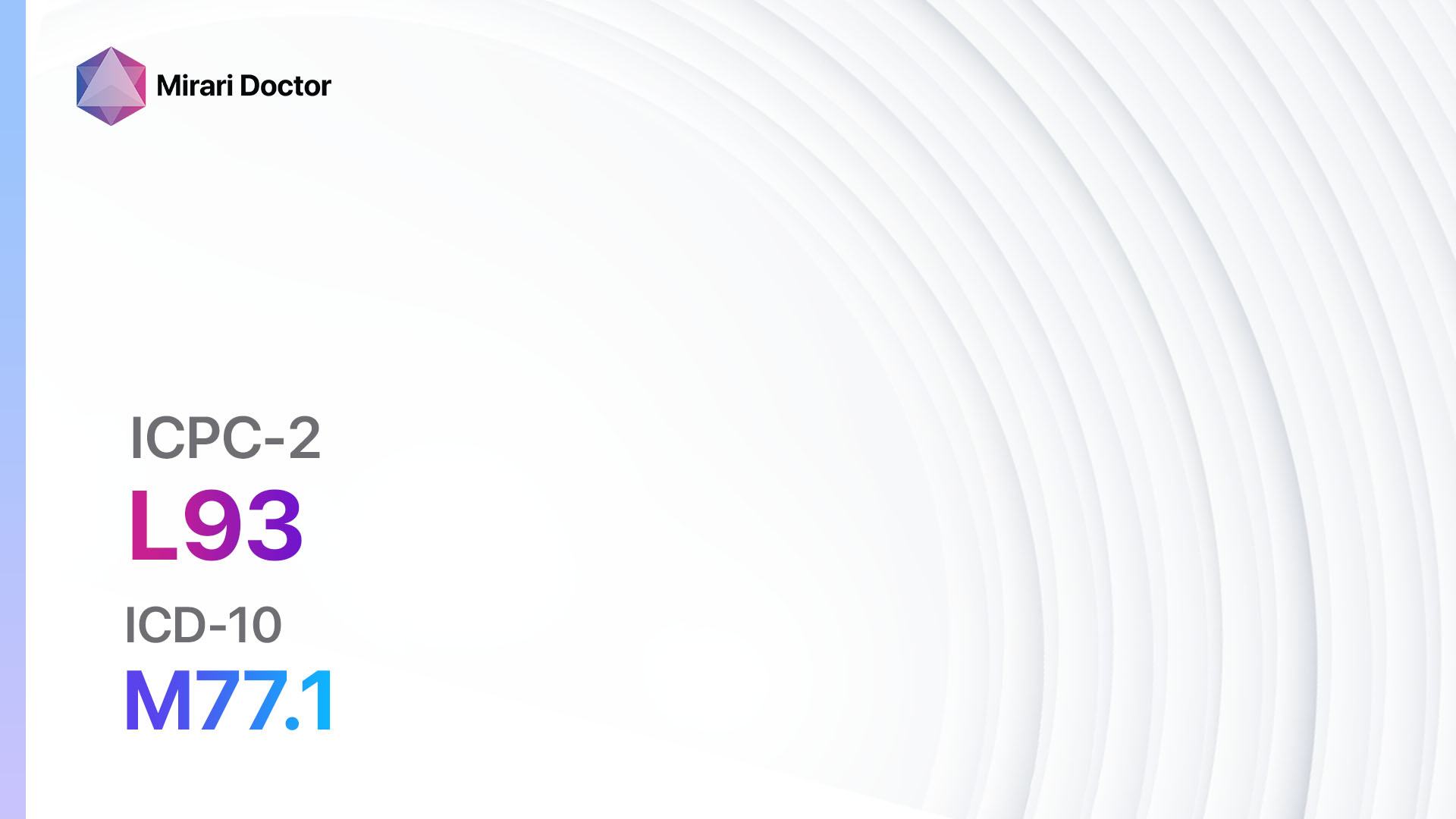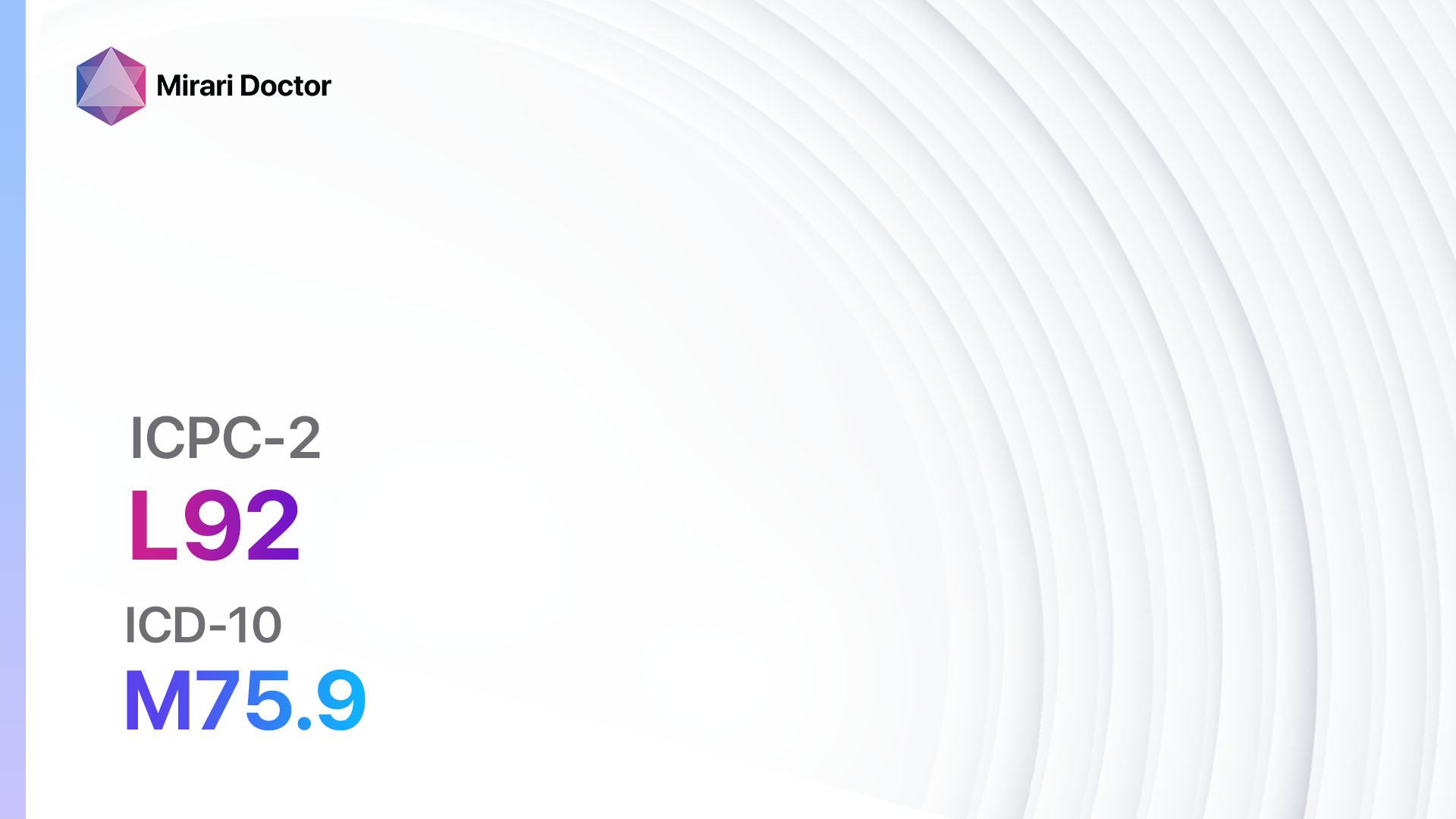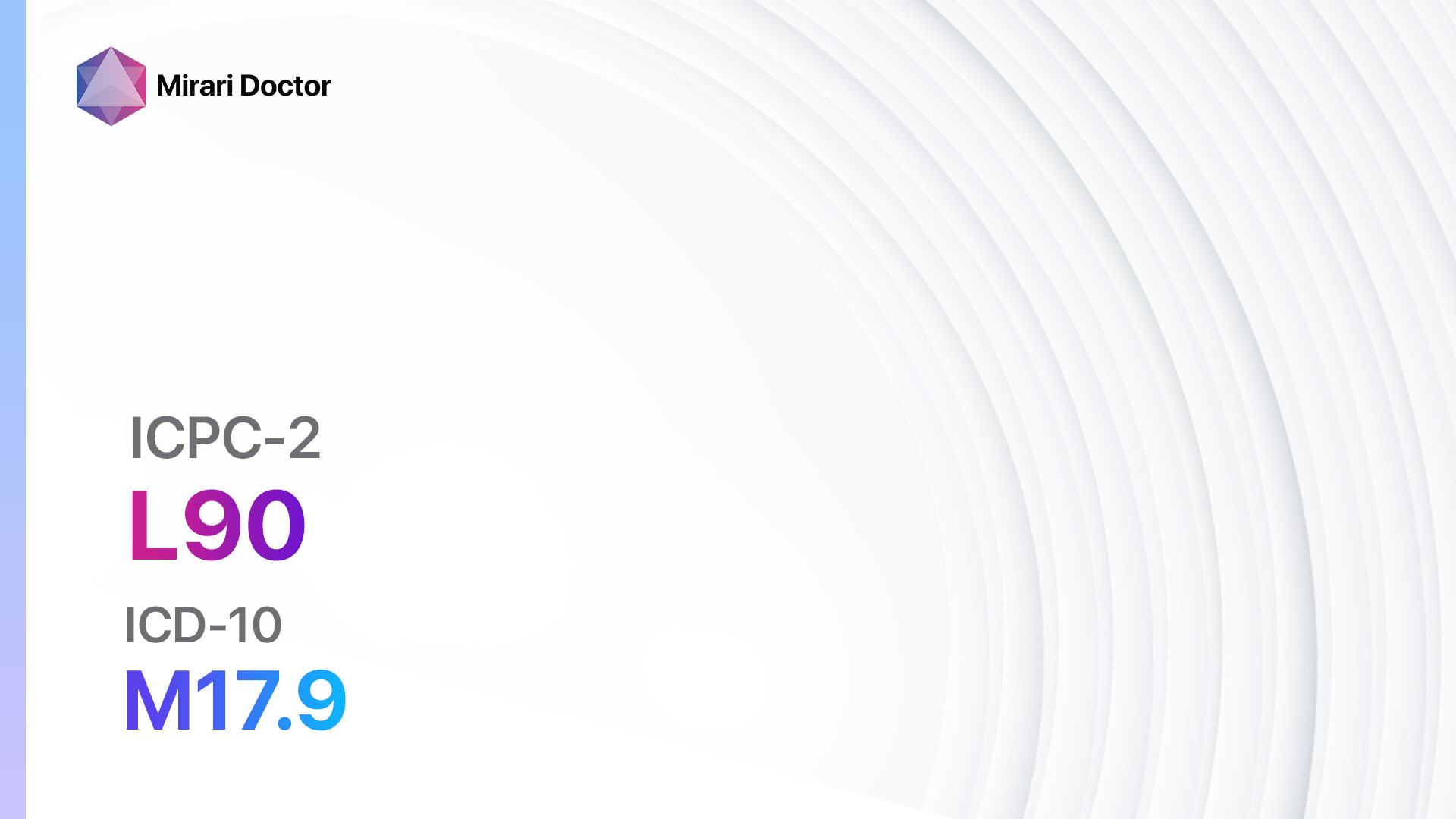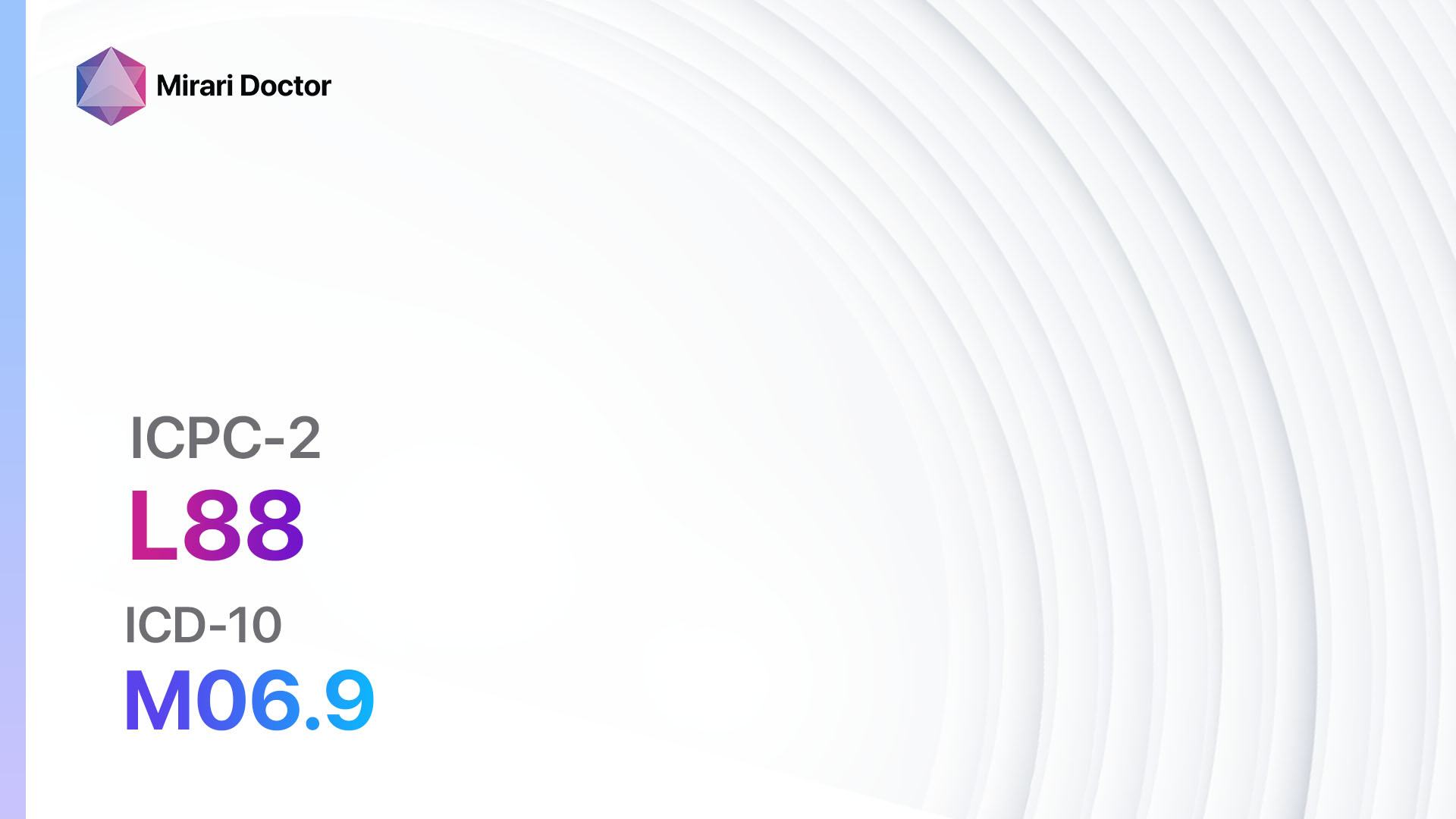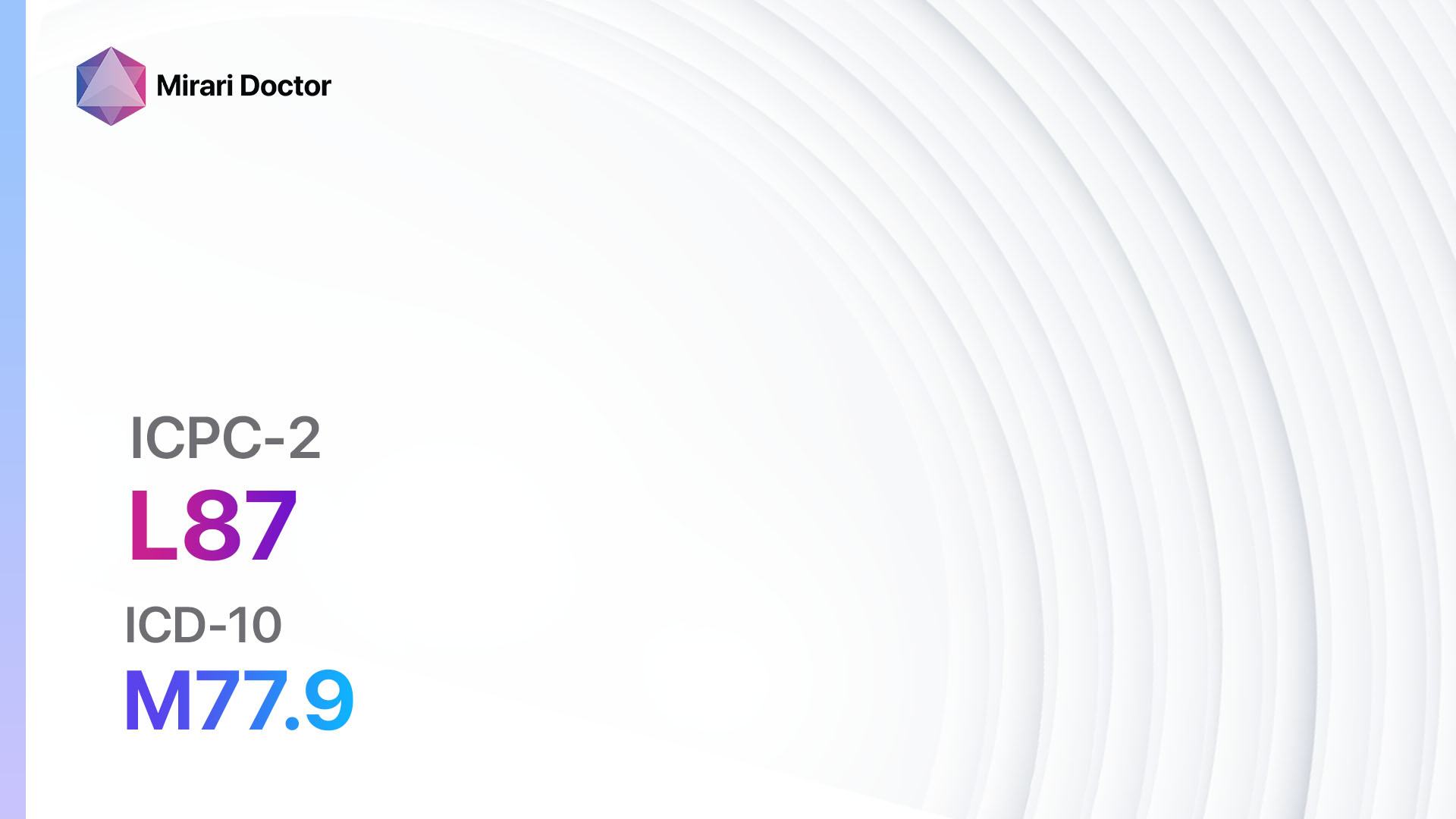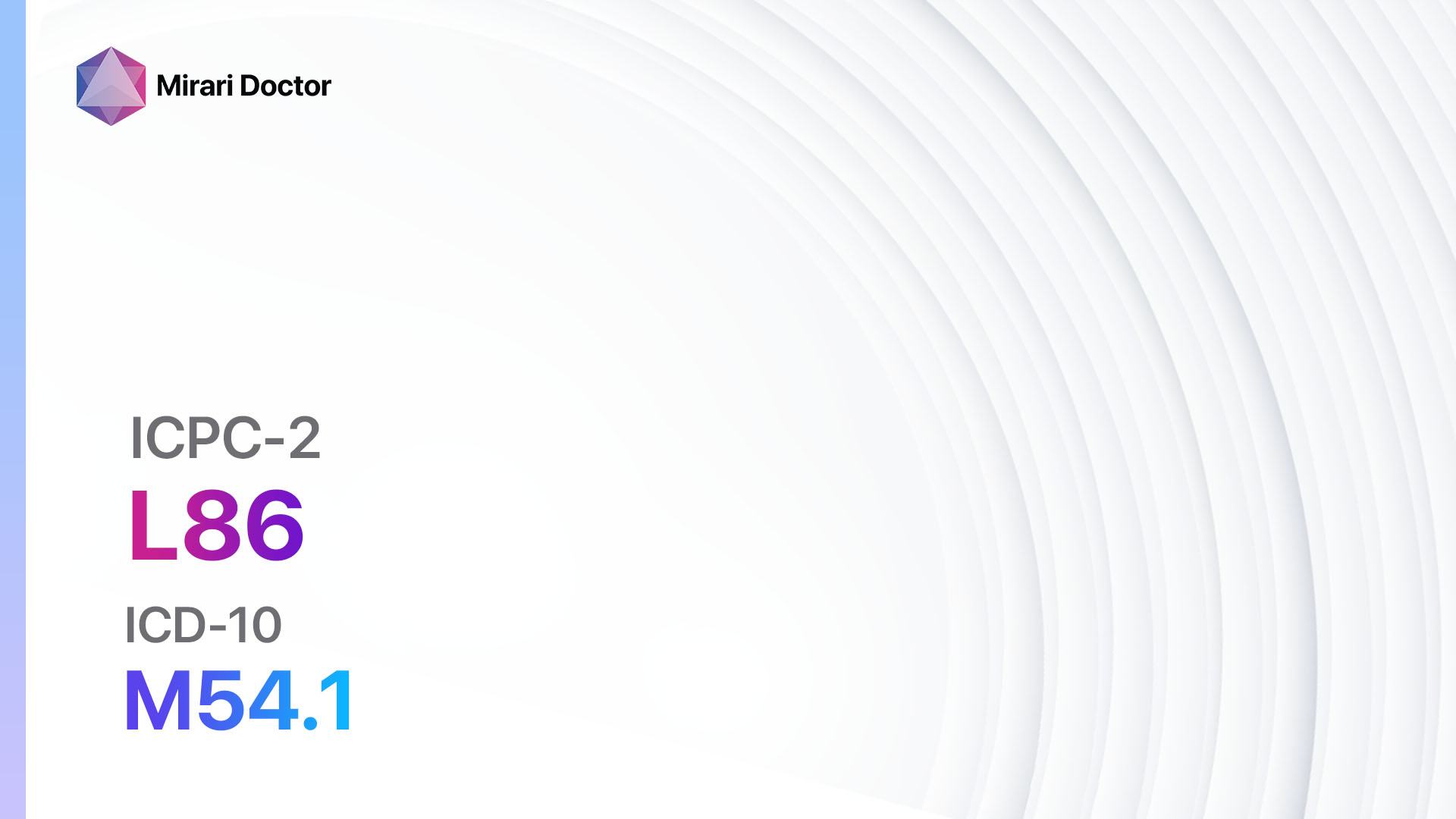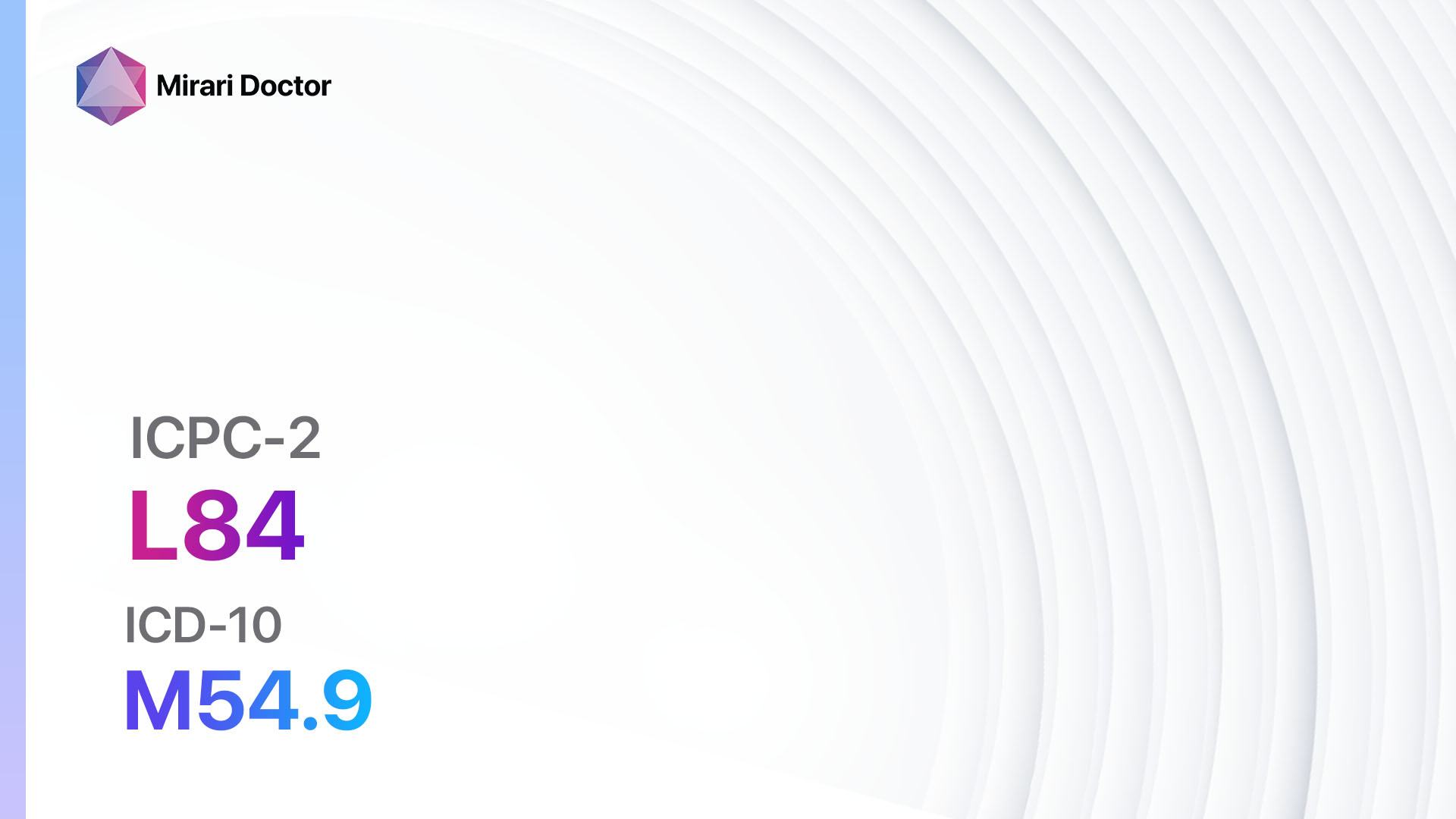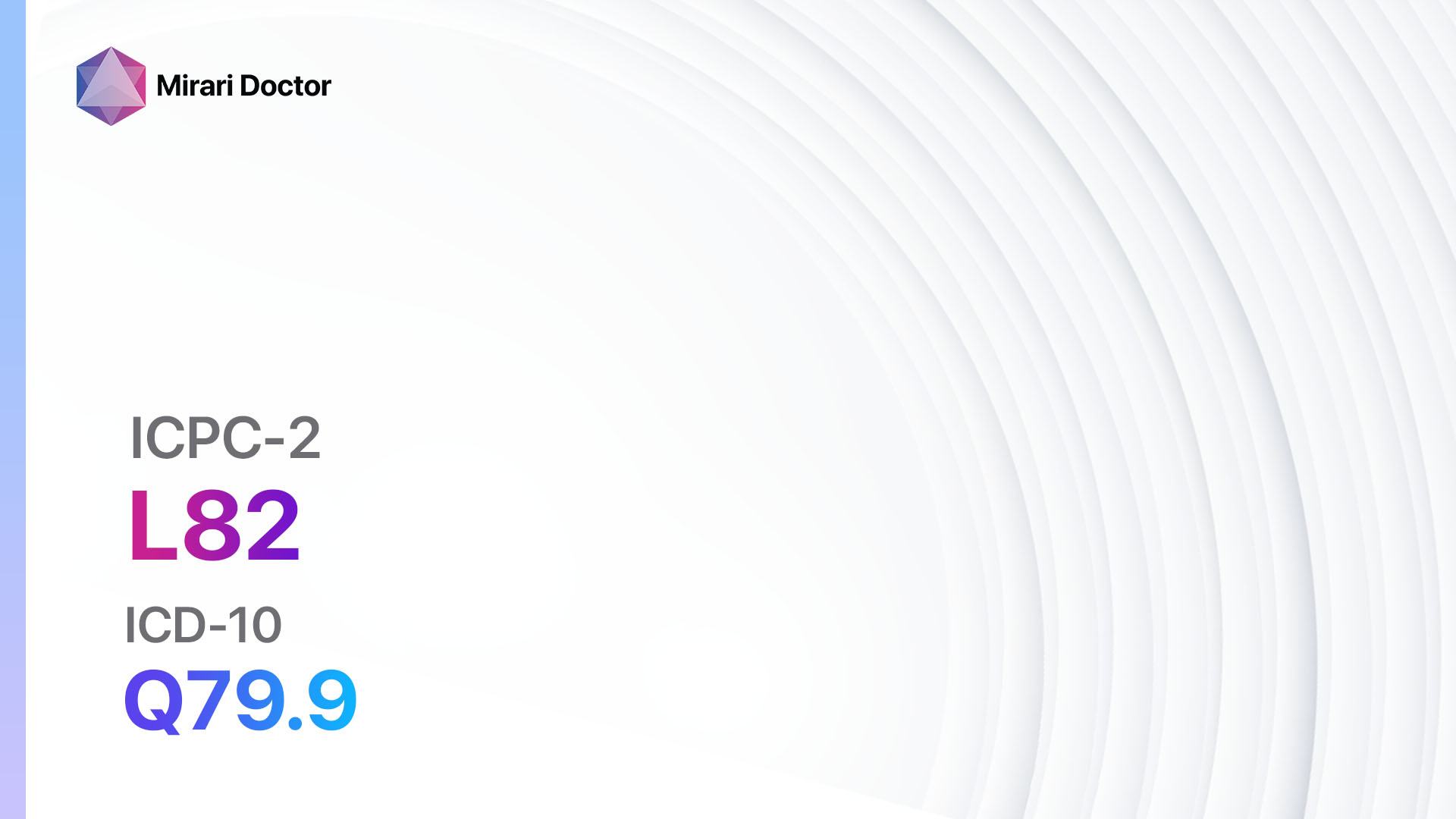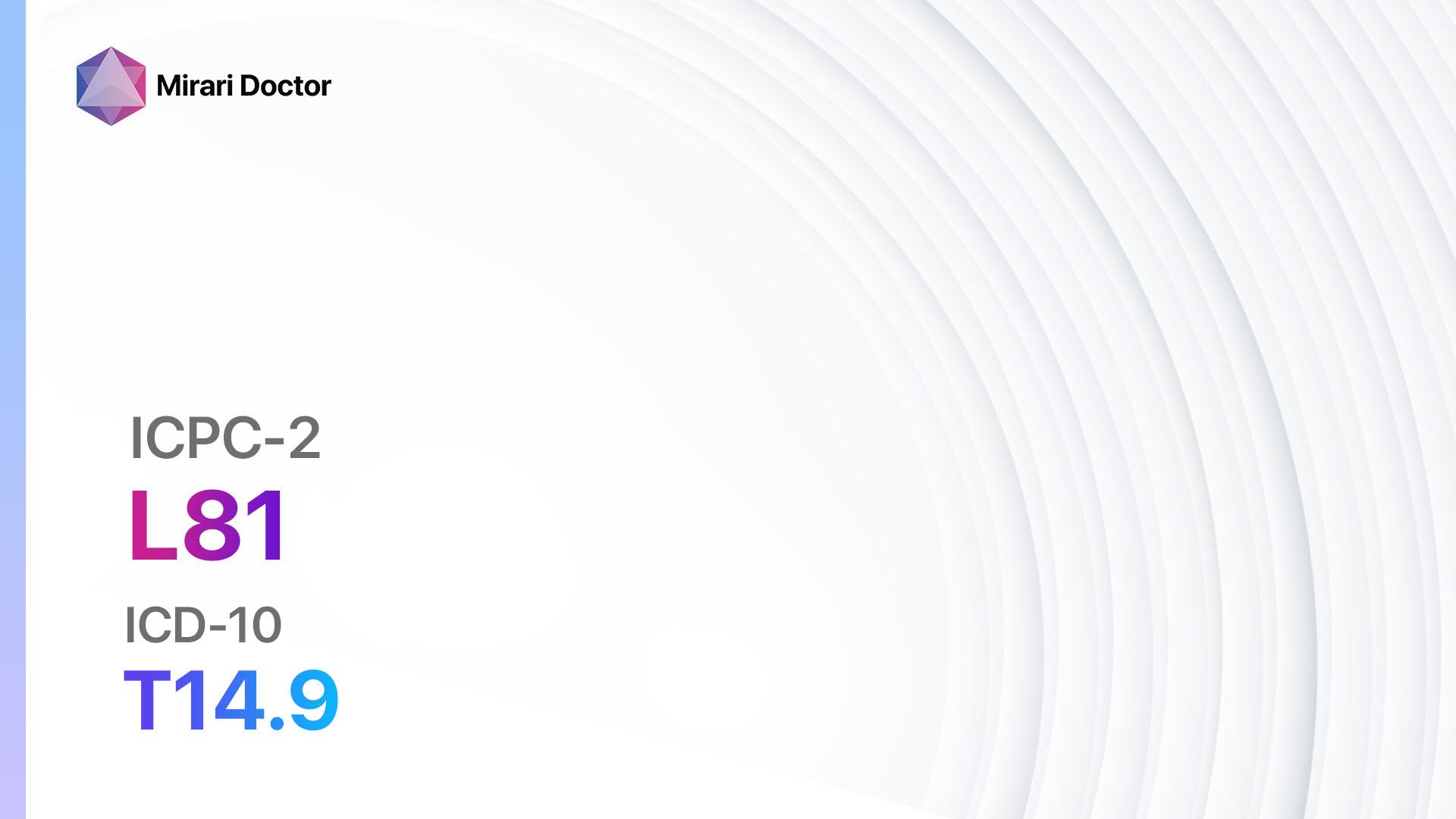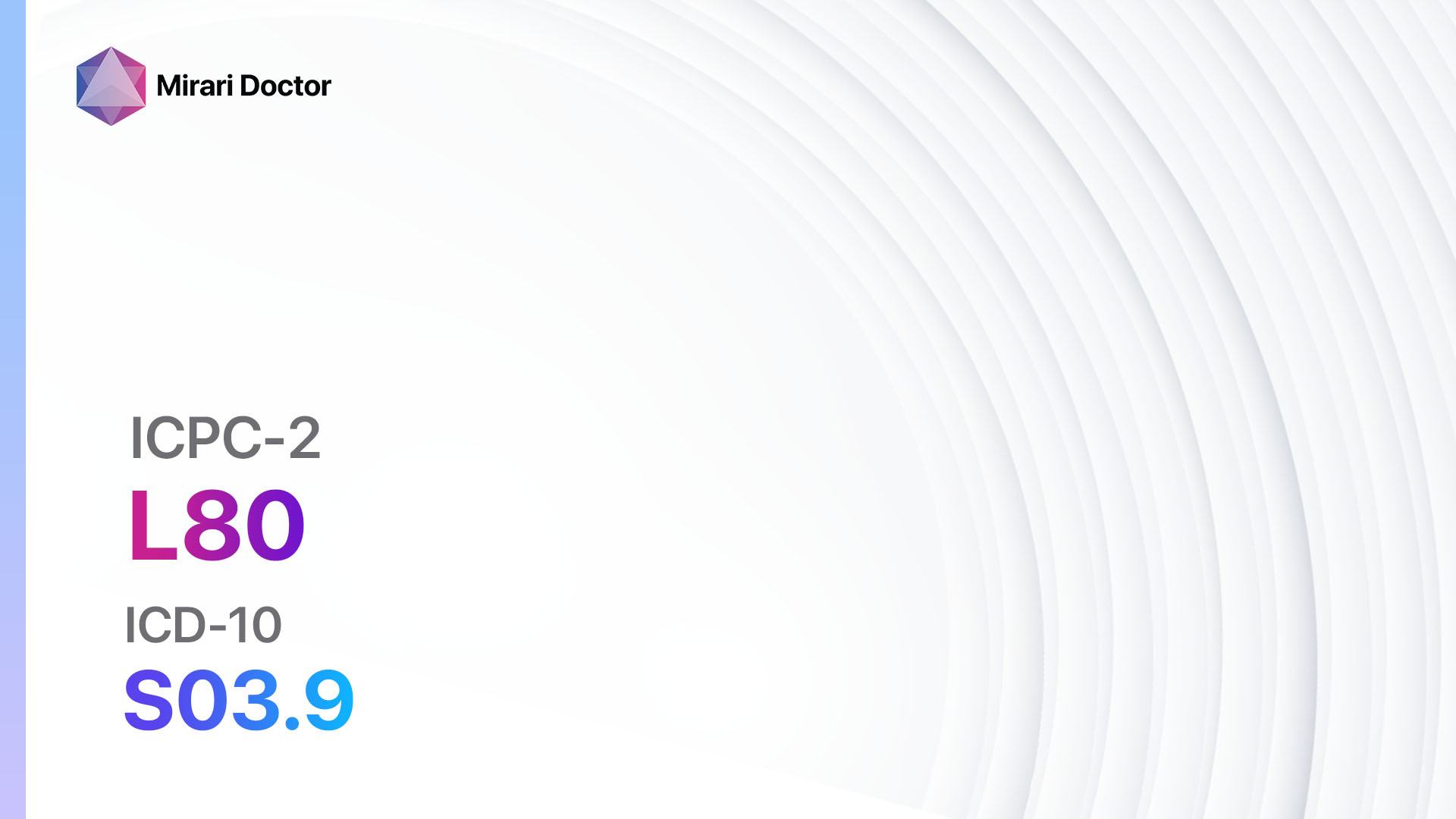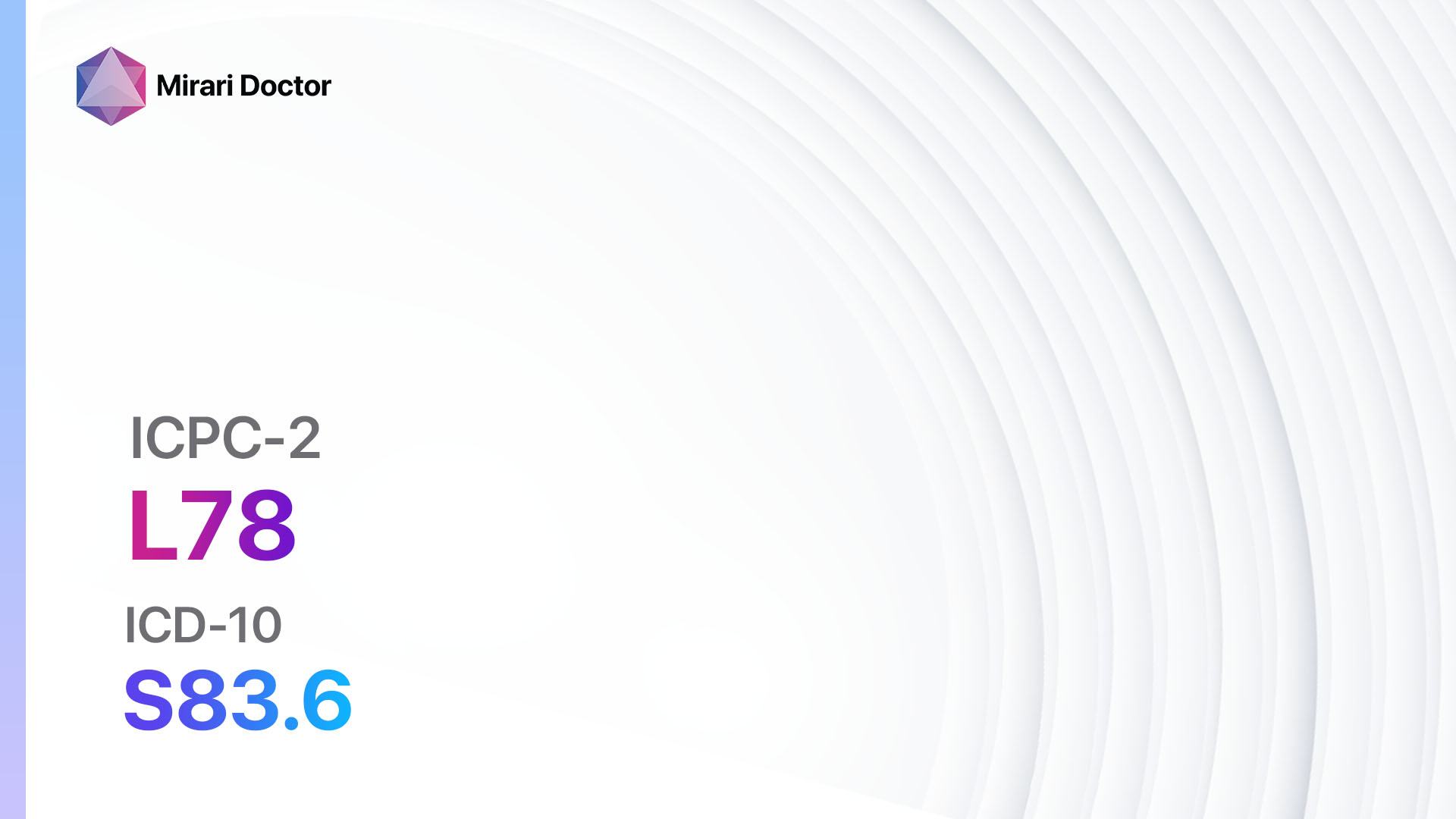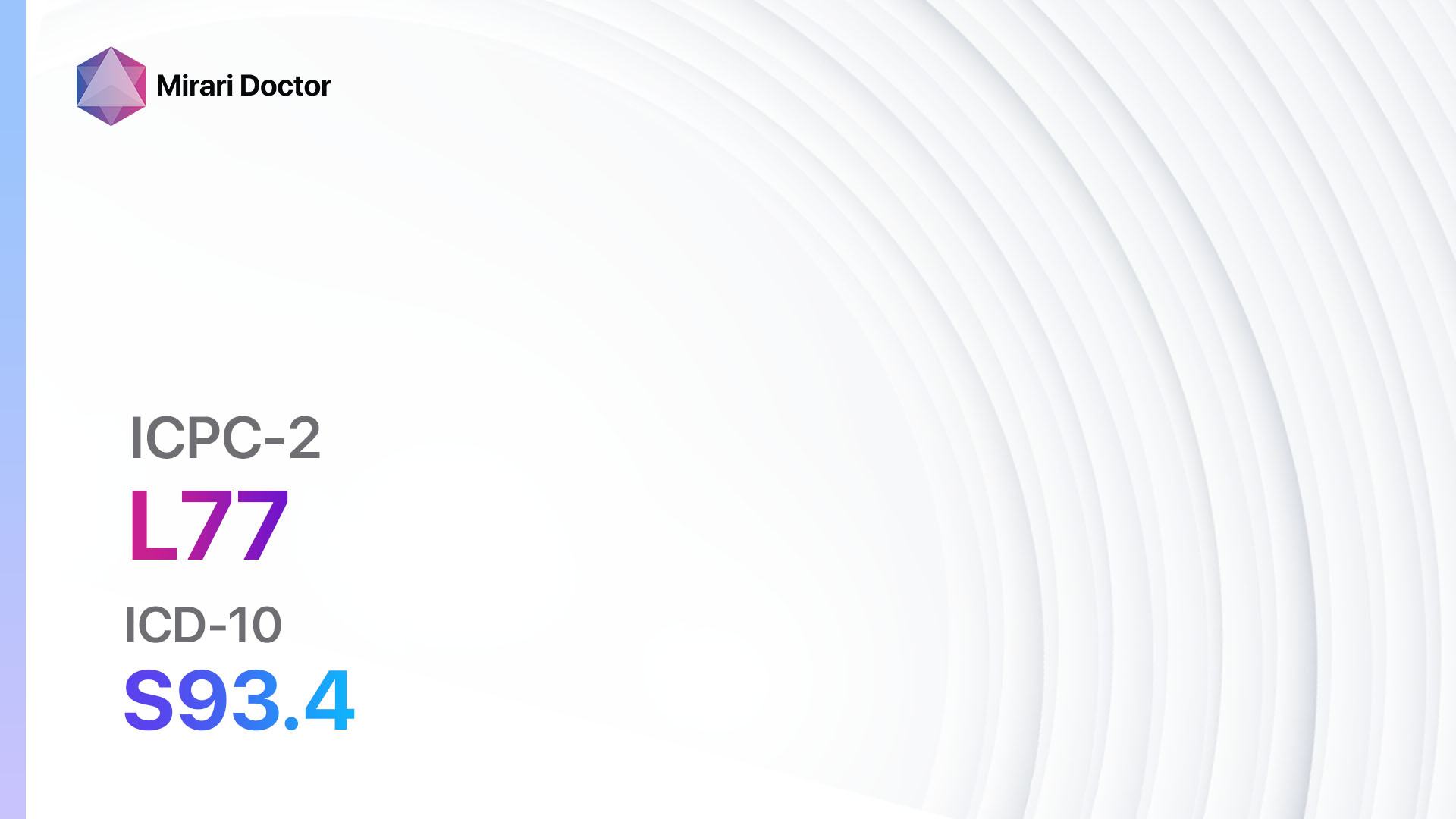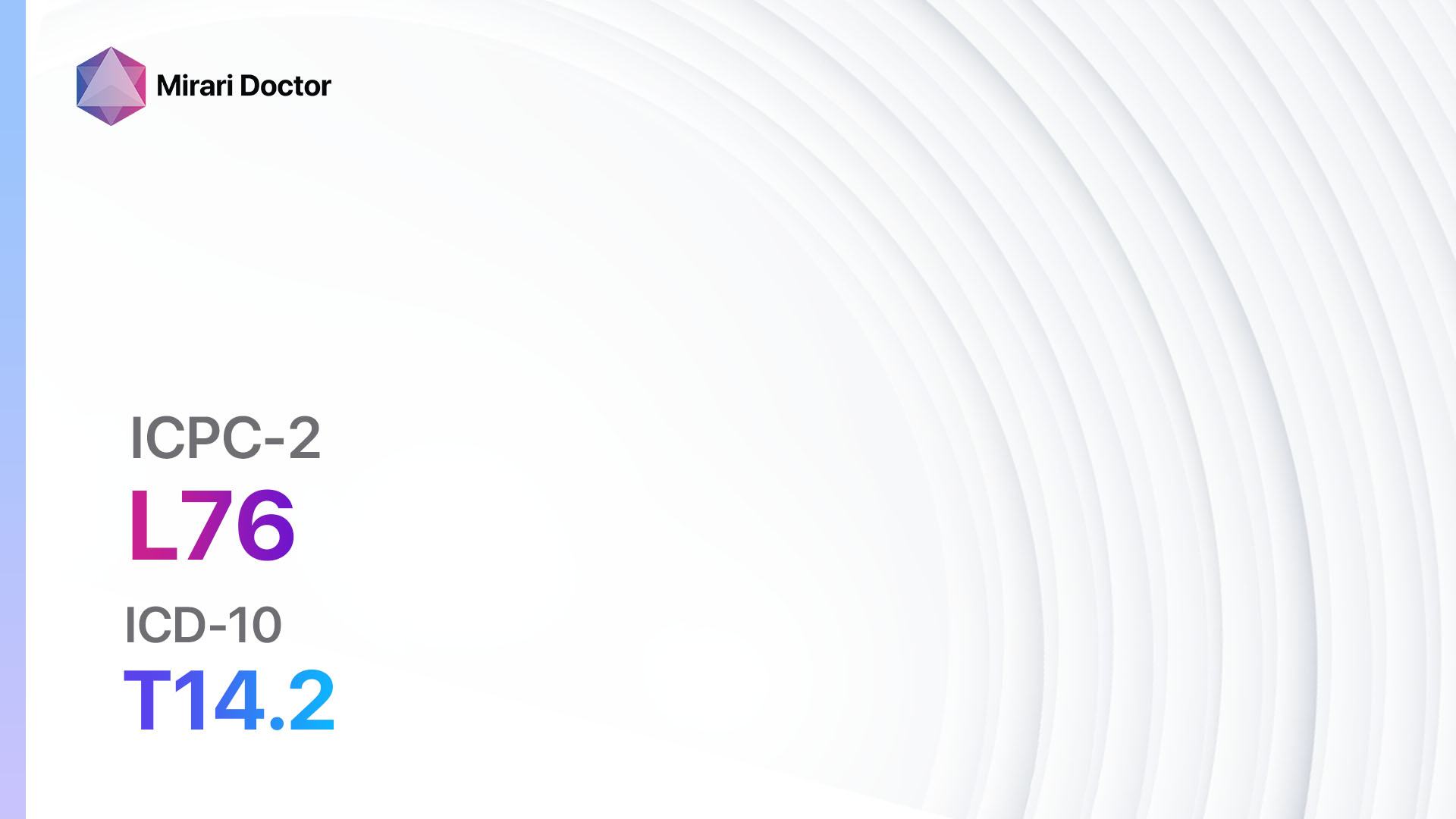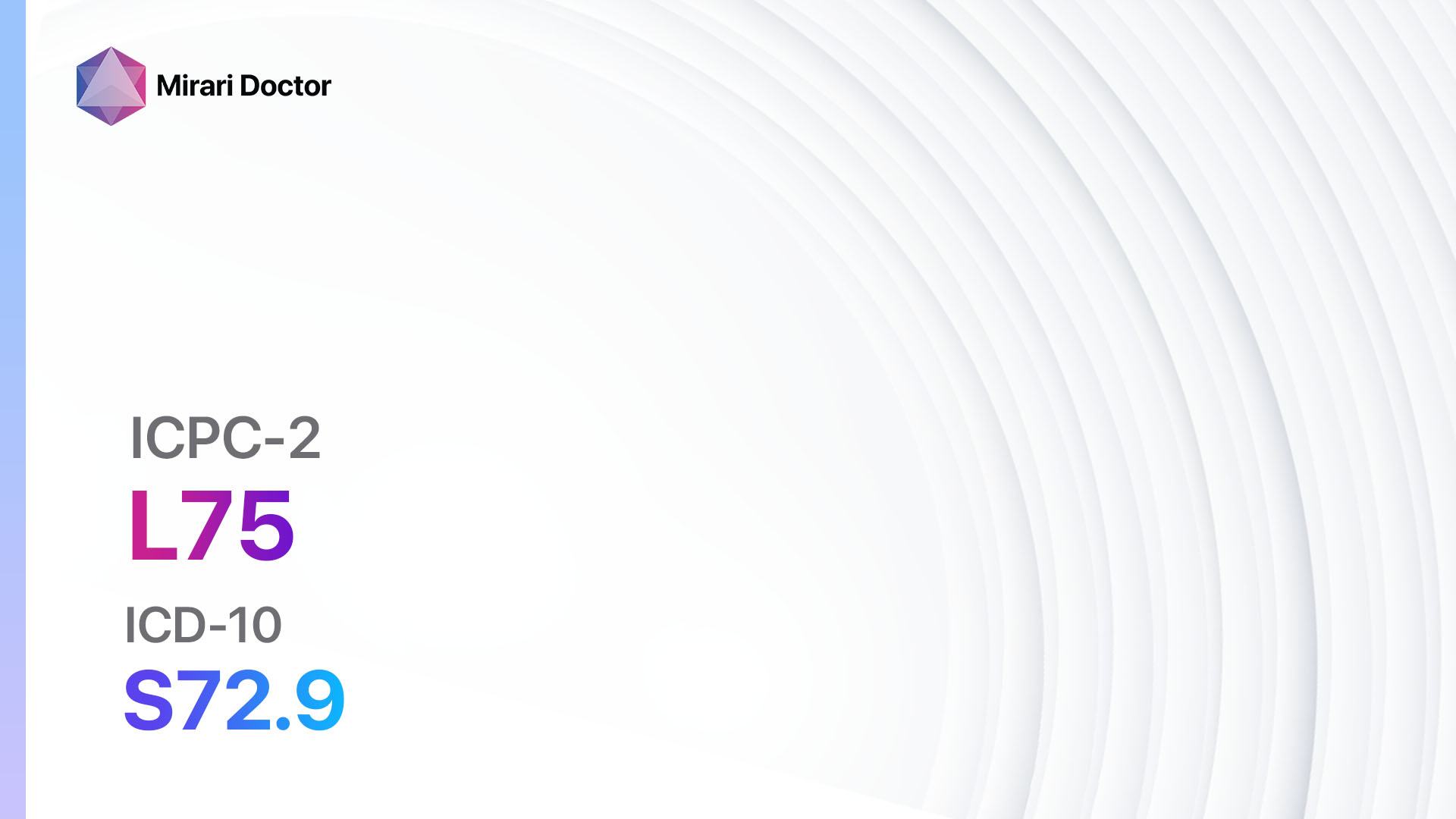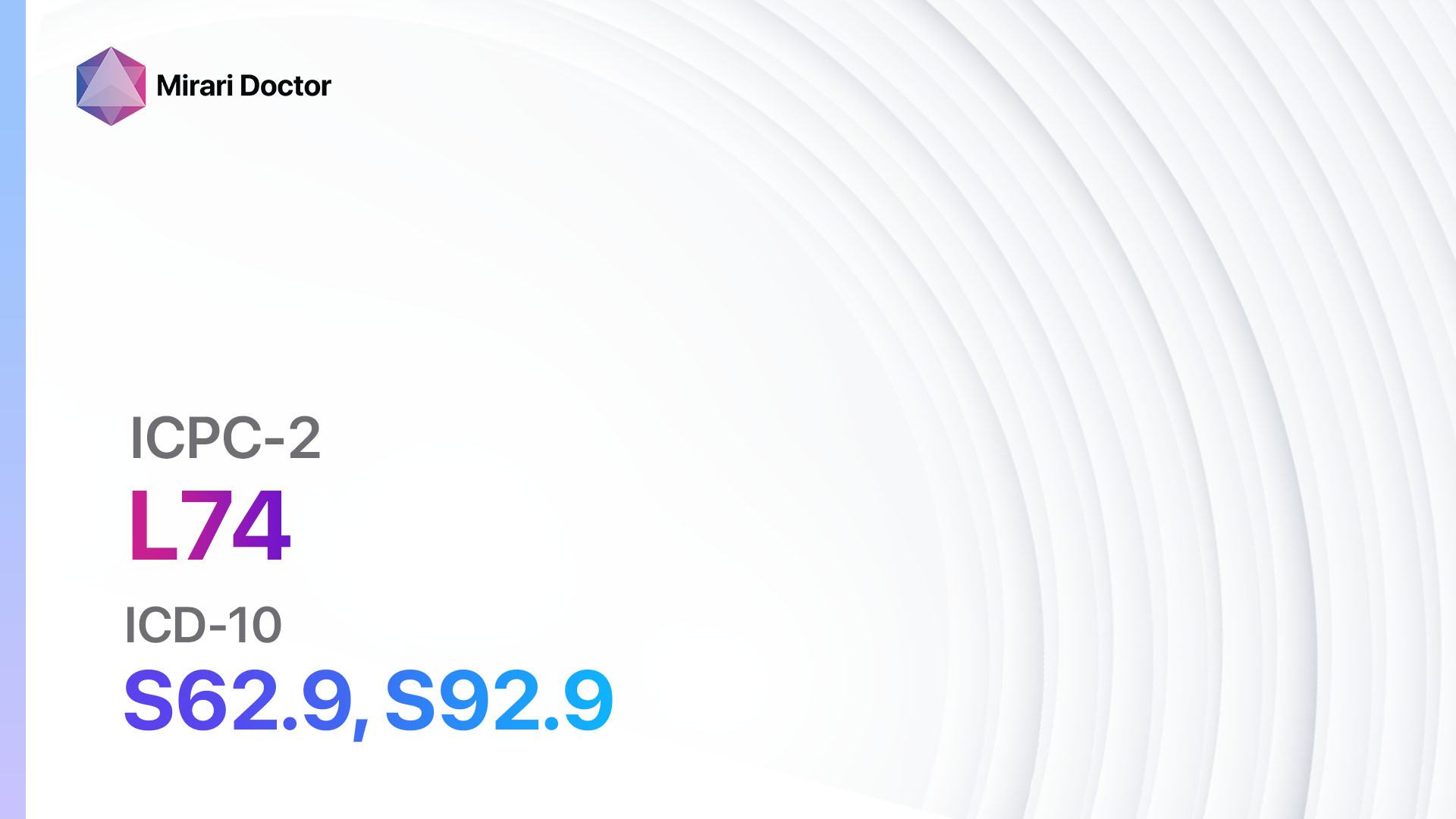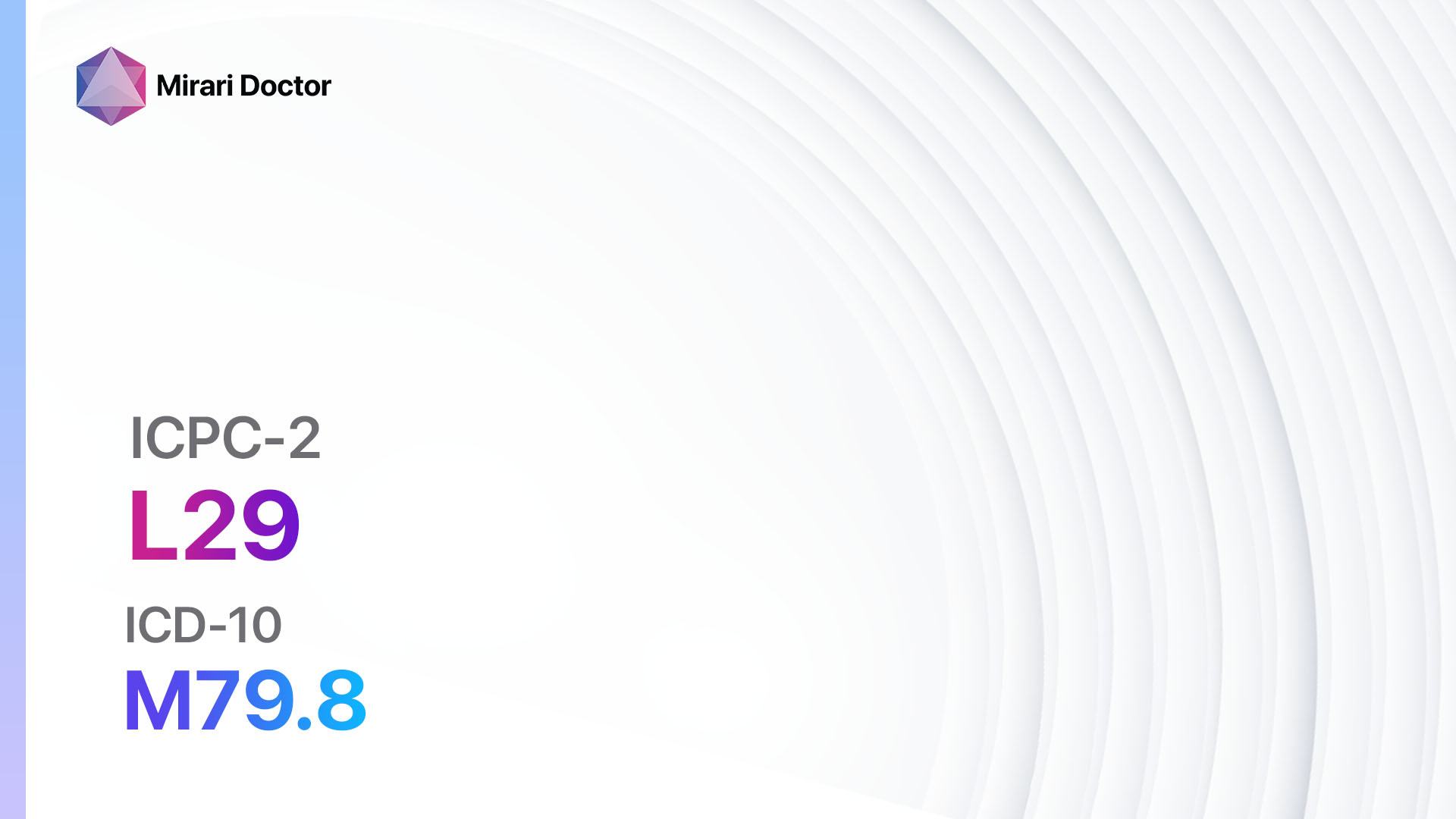
Introduction
Musculoskeletal disorders encompass a wide range of conditions that affect the muscles, bones, joints, and connective tissues. These disorders can cause pain, stiffness, limited mobility, and other symptoms that can significantly impact a person’s quality of life[1]. The aim of this guide is to provide healthcare professionals with a comprehensive approach to diagnosing and managing symptomatic musculoskeletal disorders.
Codes
- ICPC-2 Code: L29 Sympt/complt. Musculoskeletal other[2]
- ICD-10 Code: M79.8 Other specified soft tissue disorders[3]
Symptoms
- Pain: Patients may experience localized or generalized pain in the affected area. The pain can be dull, aching, sharp, or throbbing[4].
- Stiffness: Patients may have difficulty moving the affected joint or muscle, especially after periods of inactivity[5].
- Swelling: Inflammation and swelling may be present in the affected area[6].
- Limited range of motion: Patients may have difficulty moving the affected joint or muscle through its full range of motion[7].
- Weakness: Patients may experience weakness in the affected muscle or joint[8].
- Instability: Patients may feel that the affected joint is unstable or prone to giving way[9].
- Deformity: In some cases, musculoskeletal disorders can cause visible deformities, such as joint deformities or muscle wasting[10].
Causes
- Trauma: Injuries, such as fractures, sprains, strains, and dislocations, can lead to musculoskeletal symptoms.
- Overuse: Repetitive movements or activities can cause overuse injuries, such as tendinitis or bursitis.
- Infection: Certain infections, such as osteomyelitis or septic arthritis, can affect the musculoskeletal system.
- Inflammatory conditions: Autoimmune disorders, such as rheumatoid arthritis or lupus, can cause inflammation and damage to the musculoskeletal system.
- Degenerative conditions: Conditions like osteoarthritis or degenerative disc disease can cause wear and tear on the joints and spine.
- Metabolic disorders: Disorders like osteoporosis or gout can affect the musculoskeletal system.
- Genetic factors: Some musculoskeletal disorders have a genetic component, such as muscular dystrophy or Ehlers-Danlos syndrome.
Diagnostic Steps
Medical History
- Gather information about the patient’s symptoms, including the location, duration, and severity of pain or discomfort.
- Ask about any previous injuries or trauma to the affected area.
- Inquire about any underlying medical conditions, such as autoimmune disorders or metabolic disorders.
- Assess the patient’s lifestyle and occupation to identify any potential risk factors or repetitive movements that may contribute to the symptoms.
Physical Examination
- Perform a thorough physical examination of the affected area, including inspection, palpation, and range of motion testing.
- Look for any visible deformities, swelling, or redness.
- Palpate the area to assess for tenderness, warmth, or crepitus.
- Evaluate the patient’s range of motion and strength in the affected joint or muscle.
- Perform special tests or maneuvers specific to the suspected musculoskeletal disorder, such as the Lachman test for anterior cruciate ligament (ACL) tears.
Laboratory Tests
- Complete blood count (CBC): To assess for signs of infection or inflammation.
- Erythrocyte sedimentation rate (ESR) and C-reactive protein (CRP): Markers of inflammation that can help confirm the presence of an inflammatory condition.
- Rheumatoid factor (RF) and anti-cyclic citrullinated peptide (anti-CCP) antibodies: Specific tests for rheumatoid arthritis.
- Uric acid level: To assess for elevated levels associated with gout.
- Creatine kinase (CK): To evaluate for muscle damage or inflammation.
Diagnostic Imaging
- X-rays: Useful for evaluating bone fractures, joint degeneration, or bony abnormalities.
- Magnetic resonance imaging (MRI): Provides detailed images of soft tissues, such as muscles, tendons, and ligaments, and can help diagnose conditions like rotator cuff tears or herniated discs.
- Computed tomography (CT) scan: Useful for assessing bony structures and detecting fractures or bone tumors.
- Ultrasound: Can be used to visualize soft tissues, such as tendons or muscles, and assess for tears or inflammation.
- Bone scan: A nuclear medicine test that can detect areas of increased bone turnover, such as in infections or tumors.
Other Tests
- Electromyography (EMG) and nerve conduction studies (NCS): Used to assess nerve function and diagnose conditions like carpal tunnel syndrome or peripheral neuropathy.
- Arthroscopy: A minimally invasive procedure that allows direct visualization of the joint and can be used for both diagnostic and therapeutic purposes.
- Biopsy: In certain cases, a biopsy may be necessary to confirm a diagnosis, especially in suspected bone or soft tissue tumors.
Follow-up and Patient Education
- Schedule follow-up appointments to monitor the patient’s progress and adjust the treatment plan as needed.
- Provide patient education on the nature of the musculoskeletal disorder, including its causes, treatment options, and expected outcomes.
- Discuss lifestyle modifications, such as exercise, weight management, and ergonomic adjustments, to help manage symptoms and prevent further complications.
- Encourage the patient to adhere to the prescribed treatment plan and to report any worsening or new symptoms promptly.
Possible Interventions
Traditional Interventions
Medications:
Top 5 drugs for Sympt/complt. Musculoskeletal other:
- Nonsteroidal anti-inflammatory drugs (NSAIDs) (e.g., Ibuprofen, Naproxen):
- Cost: Generic versions can be $3-$20/month.
- Contraindications: Active peptic ulcer disease, history of gastrointestinal bleeding, renal impairment.
- Side effects: Upset stomach, heartburn, increased risk of bleeding.
- Severe side effects: Gastrointestinal bleeding, kidney damage, cardiovascular events.
- Drug interactions: Anticoagulants, corticosteroids, selective serotonin reuptake inhibitors (SSRIs).
- Warning: Prolonged use can increase the risk of gastrointestinal and cardiovascular complications.
- Muscle relaxants (e.g., Cyclobenzaprine, Methocarbamol):
- Cost: Generic versions can be $4-$20/month.
- Contraindications: Glaucoma, urinary retention, liver disease.
- Side effects: Drowsiness, dizziness, dry mouth.
- Severe side effects: Allergic reactions, liver toxicity.
- Drug interactions: Sedatives, opioids, antidepressants.
- Warning: May cause drowsiness or impair cognitive function.
- Corticosteroids (e.g., Prednisone, Methylprednisolone):
- Cost: Generic versions can be $4-$30/month.
- Contraindications: Active infections, uncontrolled diabetes, systemic fungal infections.
- Side effects: Increased appetite, weight gain, mood changes.
- Severe side effects: Increased risk of infections, osteoporosis, adrenal suppression.
- Drug interactions: Nonsteroidal anti-inflammatory drugs (NSAIDs), anticoagulants, antidiabetic medications.
- Warning: Prolonged use can lead to significant side effects, and tapering may be necessary to avoid adrenal insufficiency.
- Analgesics (e.g., Acetaminophen, Tramadol):
- Cost: Generic versions can be $3-$20/month.
- Contraindications: Severe liver disease, alcoholism, hypersensitivity to the drug.
- Side effects: Nausea, dizziness, constipation.
- Severe side effects: Liver toxicity, allergic reactions.
- Drug interactions: Warfarin, alcohol, other medications containing acetaminophen.
- Warning: High doses or prolonged use can lead to liver damage.
- Antidepressants (e.g., Amitriptyline, Duloxetine):
- Cost: Generic versions can be $4-$30/month.
- Contraindications: Recent myocardial infarction, narrow-angle glaucoma, concurrent use of monoamine oxidase inhibitors (MAOIs).
- Side effects: Sedation, dry mouth, constipation.
- Severe side effects: Suicidal thoughts, serotonin syndrome.
- Drug interactions: MAOIs, other serotonergic medications.
- Warning: May take several weeks to achieve therapeutic effect for pain relief.
Alternative Drugs:
- Topical analgesics (e.g., Capsaicin cream): Can provide localized pain relief. Cost: $10-$30 per tube.
- Anticonvulsants (e.g., Gabapentin, Pregabalin): Can be used for neuropathic pain. Cost: Generic versions can be $4-$30/month.
- Opioids (e.g., Oxycodone, Hydrocodone): Reserved for severe pain that is unresponsive to other treatments. Cost: Varies depending on the specific medication and dosage.
Surgical Procedures:
- Arthroscopy: A minimally invasive procedure that allows visualization and treatment of joint conditions, such as meniscal tears or cartilage damage. Cost: $5,000-$10,000.
- Joint replacement surgery: In cases of severe joint damage, joint replacement surgery may be necessary. Cost: $20,000-$50,000 per joint.
Alternative Interventions
- Physical therapy: Can help improve strength, flexibility, and function. Cost: $50-$150 per session.
- Chiropractic care: Manipulative therapy that can help relieve pain and improve joint function. Cost: $50-$200 per session.
- Acupuncture: May help reduce pain and improve musculoskeletal function. Cost: $60-$120 per session.
- Massage therapy: Can help relax muscles, reduce pain, and improve circulation. Cost: $50-$100 per session.
- Herbal supplements: Some herbal supplements, such as turmeric or ginger, may have anti-inflammatory properties. Cost: Varies depending on the specific supplement.
Lifestyle Interventions
- Exercise: Regular physical activity, including stretching, strengthening, and aerobic exercises, can help improve musculoskeletal function and reduce pain. Cost: Varies depending on the chosen activity (e.g., gym membership, exercise equipment).
- Weight management: Maintaining a healthy weight can reduce stress on the joints and improve symptoms. Cost: Varies depending on the chosen weight loss method (e.g., diet programs, meal replacements).
- Ergonomic adjustments: Modifying workstations or using ergonomic tools can help reduce strain on the musculoskeletal system. Cost: Varies depending on the specific adjustments needed (e.g., ergonomic chair, keyboard).
- Heat and cold therapy: Applying heat or cold to the affected area can help reduce pain and inflammation. Cost: Varies depending on the chosen method (e.g., heating pad, ice pack).
- Stress management: Stress can exacerbate musculoskeletal symptoms, so stress reduction techniques, such as meditation or yoga, may be beneficial. Cost: Varies depending on the chosen method (e.g., yoga classes, meditation apps).
It is important to note that the cost ranges provided are approximate and may vary depending on the location and availability of the interventions. It is recommended to consult with healthcare professionals and insurance providers for accurate cost information.
Mirari Cold Plasma Alternative Intervention
Understanding Mirari Cold Plasma
- Safe and Non-Invasive Treatment: Mirari Cold Plasma is a safe and non-invasive treatment option for various skin conditions. It does not require incisions, minimizing the risk of scarring, bleeding, or tissue damage.
- Efficient Extraction of Foreign Bodies: Mirari Cold Plasma facilitates the removal of foreign bodies from the skin by degrading and dissociating organic matter, allowing easier access and extraction.
- Pain Reduction and Comfort: Mirari Cold Plasma has a local analgesic effect, providing pain relief during the treatment, making it more comfortable for the patient.
- Reduced Risk of Infection: Mirari Cold Plasma has antimicrobial properties, effectively killing bacteria and reducing the risk of infection.
- Accelerated Healing and Minimal Scarring: Mirari Cold Plasma stimulates wound healing and tissue regeneration, reducing healing time and minimizing the formation of scars.
Mirari Cold Plasma Prescription
Video instructions for using Mirari Cold Plasma Device – L29 Sympt/complt. Musculoskeletal other (ICD-10:M79.8)
| Mild | Moderate | Severe |
| Mode setting: 2 (Wound Healing) Location: 0 (Localized) Morning: 15 minutes, Evening: 15 minutes |
Mode setting: 2 (Wound Healing) Location: 0 (Localized) Morning: 30 minutes, Lunch: 30 minutes, Evening: 30 minutes |
Mode setting: 2 (Wound Healing) Location: 0 (Localized) Morning: 30 minutes, Lunch: 30 minutes, Evening: 30 minutes |
| Mode setting: 9 (Arthritis) Location: 0 (Localized) Morning: 15 minutes, Evening: 15 minutes |
Mode setting: 9 (Arthritis) Location: 0 (Localized) Morning: 30 minutes, Lunch: 30 minutes, Evening: 30 minutes |
Mode setting: 9 (Arthritis) Location: 0 (Localized) Morning: 30 minutes, Lunch: 30 minutes, Evening: 30 minutes |
| Mode setting: 7 (Immunotherapy) Location: 1 (Sacrum) Morning: 15 minutes, Evening: 15 minutes |
Mode setting: 7 (Immunotherapy) Location: 1 (Sacrum) Morning: 30 minutes, Lunch: 30 minutes, Evening: 30 minutes |
Mode setting: 7 (Immunotherapy) Location: 1 (Sacrum) Morning: 30 minutes, Lunch: 30 minutes, Evening: 30 minutes |
| Total Morning: 45 minutes approx. $7.50 USD, Evening: 45 minutes approx. $7.50 USD |
Total Morning: 90 minutes approx. $15 USD, Lunch: 90 minutes approx. $15 USD, Evening: 90 minutes approx. $15 USD, |
Total Morning: 90 minutes approx. $15 USD, Lunch: 90 minutes approx. $15 USD, Evening: 90 minutes approx. $15 USD, |
| Usual treatment for 7-60 days approx. $105 USD – $900 USD | Usual treatment for 6-8 weeks approx. $1,890 USD – $2,520 USD |
Usual treatment for 3-6 months approx. $4,050 USD – $8,100 USD
|
 |
|
Use the Mirari Cold Plasma device to treat Sympt/complt. Musculoskeletal other effectively.
WARNING: MIRARI COLD PLASMA IS DESIGNED FOR THE HUMAN BODY WITHOUT ANY ARTIFICIAL OR THIRD PARTY PRODUCTS. USE OF OTHER PRODUCTS IN COMBINATION WITH MIRARI COLD PLASMA MAY CAUSE UNPREDICTABLE EFFECTS, HARM OR INJURY. PLEASE CONSULT A MEDICAL PROFESSIONAL BEFORE COMBINING ANY OTHER PRODUCTS WITH USE OF MIRARI.
Step 1: Cleanse the Skin
- Start by cleaning the affected area of the skin with a gentle cleanser or mild soap and water. Gently pat the area dry with a clean towel.
Step 2: Prepare the Mirari Cold Plasma device
- Ensure that the Mirari Cold Plasma device is fully charged or has fresh batteries as per the manufacturer’s instructions. Make sure the device is clean and in good working condition.
- Switch on the Mirari device using the power button or by following the specific instructions provided with the device.
- Some Mirari devices may have adjustable settings for intensity or treatment duration. Follow the manufacturer’s instructions to select the appropriate settings based on your needs and the recommended guidelines.
Step 3: Apply the Device
- Place the Mirari device in direct contact with the affected area of the skin. Gently glide or hold the device over the skin surface, ensuring even coverage of the area experiencing.
- Slowly move the Mirari device in a circular motion or follow a specific pattern as indicated in the user manual. This helps ensure thorough treatment coverage.
Step 4: Monitor and Assess:
- Keep track of your progress and evaluate the effectiveness of the Mirari device in managing your Sympt/complt. Musculoskeletal other. If you have any concerns or notice any adverse reactions, consult with your health care professional.
Note
This guide is for informational purposes only and should not replace the advice of a medical professional. Always consult with your healthcare provider or a qualified medical professional for personal advice, diagnosis, or treatment. Do not solely rely on the information presented here for decisions about your health. Use of this information is at your own risk. The authors of this guide, nor any associated entities or platforms, are not responsible for any potential adverse effects or outcomes based on the content.
Mirari Cold Plasma System Disclaimer
- Purpose: The Mirari Cold Plasma System is a Class 2 medical device designed for use by trained healthcare professionals. It is registered for use in Thailand and Vietnam. It is not intended for use outside of these locations.
- Informational Use: The content and information provided with the device are for educational and informational purposes only. They are not a substitute for professional medical advice or care.
- Variable Outcomes: While the device is approved for specific uses, individual outcomes can differ. We do not assert or guarantee specific medical outcomes.
- Consultation: Prior to utilizing the device or making decisions based on its content, it is essential to consult with a Certified Mirari Tele-Therapist and your medical healthcare provider regarding specific protocols.
- Liability: By using this device, users are acknowledging and accepting all potential risks. Neither the manufacturer nor the distributor will be held accountable for any adverse reactions, injuries, or damages stemming from its use.
- Geographical Availability: This device has received approval for designated purposes by the Thai and Vietnam FDA. As of now, outside of Thailand and Vietnam, the Mirari Cold Plasma System is not available for purchase or use.
References
- Woolf, A. D., & Pfleger, B. (2003). Burden of major musculoskeletal conditions. Bulletin of the World Health Organization, 81(9), 646-656.
- ICPC-2 – International Classification of Primary Care, Second edition. (n.d.). Retrieved from https://www.who.int/standards/classifications/other-classifications/international-classification-of-primary-care
- ICD-10 Version:2019. (n.d.). Retrieved from https://icd.who.int/browse10/2019/en#/M79.8
- Croft, P., Blyth, F. M., & van der Windt, D. (Eds.). (2010). Chronic pain epidemiology: from aetiology to public health. Oxford University Press.
- Milani, P., Coccetta, C. A., Rabini, A., Sciarra, T., Massazza, G., & Ferriero, G. (2018). Mobile smartphone applications for body position measurement in rehabilitation: a review of goniometric tools. PM&R, 10(11), 1038-1043.
- Punzi, L., Galozzi, P., Luisetto, R., Favero, M., Ramonda, R., Oliviero, F., & Scanu, A. (2016). Post-traumatic arthritis: overview on pathogenic mechanisms and role of inflammation. RMD open, 2(2), e000279.
- Steultjens, M. P., Dekker, J., Van Baar, M. E., Oostendorp, R. A., & Bijlsma, J. W. (2000). Range of joint motion and disability in patients with osteoarthritis of the knee or hip. Rheumatology, 39(9), 955-961.
- Alnahdi, A. H., Zeni, J. A., & Snyder-Mackler, L. (2012). Muscle impairments in patients with knee osteoarthritis. Sports health, 4(4), 284-292.
- Childs, J. D., Sparto, P. J., Fitzgerald, G. K., Bizzini, M., & Irrgang, J. J. (2004). Alterations in lower extremity movement and muscle activation patterns in individuals with knee osteoarthritis. Clinical biomechanics, 19(1), 44-49.
- Steultjens, M. P., Dekker, J., & Bijlsma, J. W. (2001). Coping, pain, and disability in osteoarthritis: a longitudinal study. The Journal of Rheumatology, 28(5), 1068-1072.
Related articles
Made in USA



